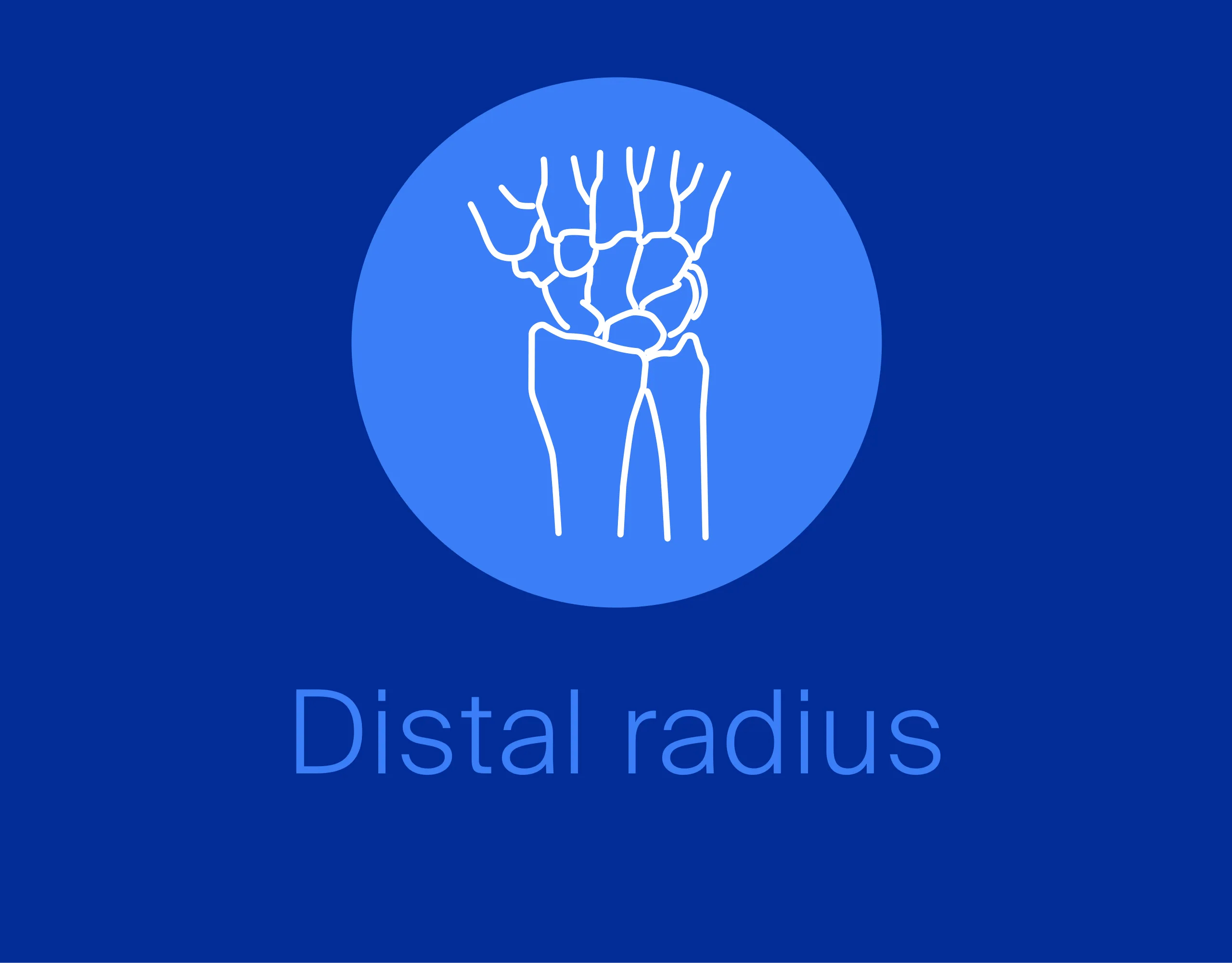Collateral ligament repair
1. General considerations
Introduction
In a dislocation of the proximal interphalangeal (PIP) joint, the collateral ligaments are usually ruptured.
These soft-tissue injuries commonly heal without reconstruction.
Collateral ligament ruptures may need repair if the joint remains unstable after closed reduction.
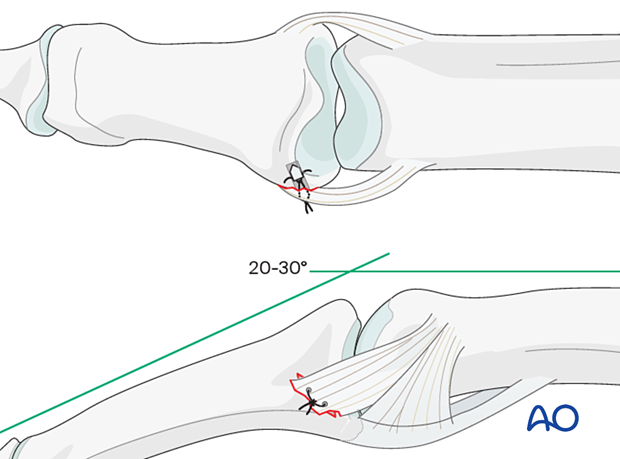
Ligament injuries
The collateral ligament usually tears at one of two locations:
- At its attachment to the proximal phalanx
- At its attachment to the volar plate and middle phalanx
These injuries may be accompanied by a partial lesion of the volar plate.
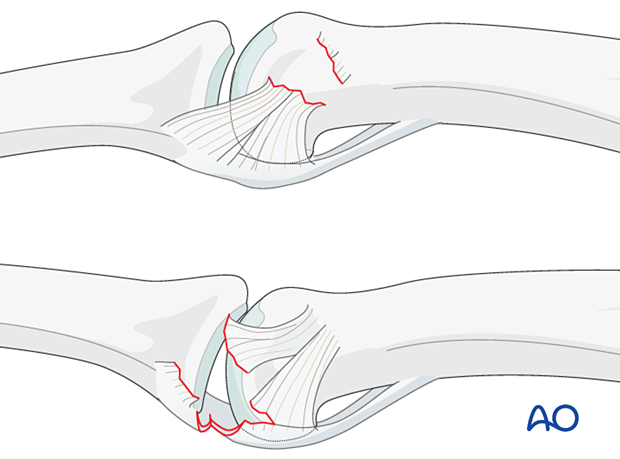
Treatment principles
When ligament repair is necessary, the surgeon should be aware of three guiding principles:
- Diagnose the precise location of the lesion.
- Be familiar with the related anatomy and surgical approach.
- Minimize further soft-tissue dissection.
Suture anchors or bone tunneling for repair of ligament detachments
Two alternative techniques are available for collateral ligament reattachment: suture anchors or bone tunneling.
The advantage of suture anchors is the relative ease of the procedure. It is also a time-saving technique.
Tunneling is the more demanding procedure, but it is significantly less expensive.

2. Patient preparation
Place the patient supine with the arm on a radiolucent hand table.

3. Approach
For this procedure a midaxial approach to the proximal interphalangeal joint is normally used.
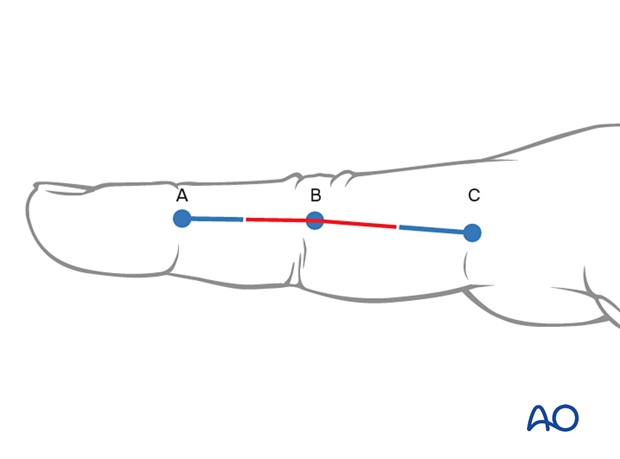
4. Reduction of dislocation
Closed reduction
Dislocation usually presents as an extension displacement with dorsal deformity.
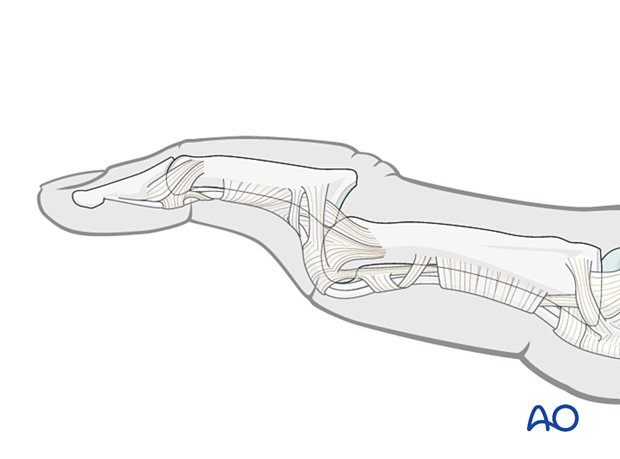
This can be reduced by increasing the deformity with gentle dorsally applied pressure on the middle phalanx to reduce the joint. This keeps the palmar structures in tension and reduced the risk of soft-tissue interposition.
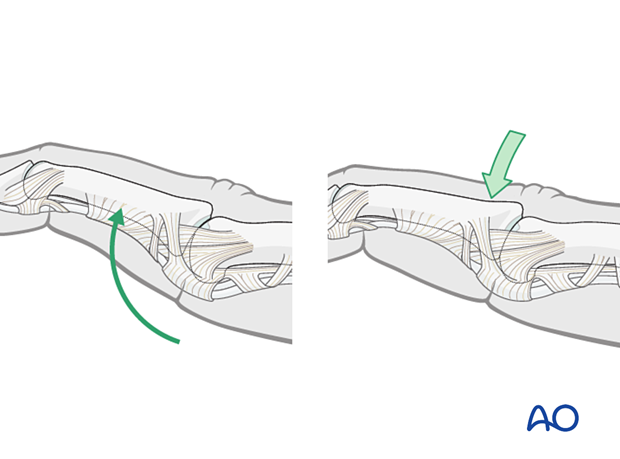
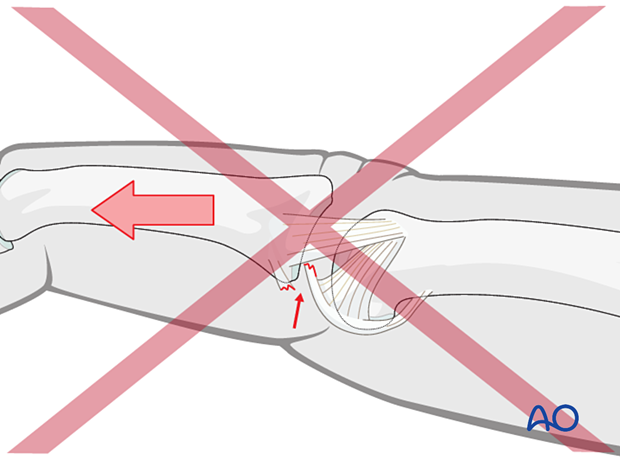
Stability evaluation
Confirm reduction with an image intensifier and check the joint stability by active flexion and extension and passive varus/valgus stress test. This should show congruent movement compared with the adjacent joints.
If this is the case, no further operative treatment is necessary.

5. Open reduction and repair of interposed tissues
Indications
If any widening of the joint is visible, soft-tissue interposition, usually of the lateral band, may be the cause.
In this case, the condyle is trapped between the lateral band and the central slip (a so-called “buttonhole” lesion).

Management
If the lateral band (or, more rarely, the central slip or the collateral ligament) is trapped in the joint, use a dental pick to free and reduce it, while keeping the PIP joint in flexion.
Subsequent repair is often necessary.
Use 6.0 nonabsorbable monofilament nylon to repair the injury with interrupted sutures as illustrated.
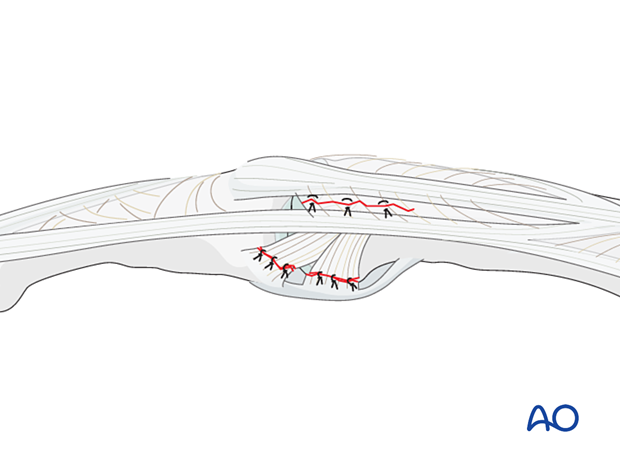
6. Option 1 – Repair of palmar collateral ligament detachment with suture anchor
Description of the injury
In this injury, the collateral ligament is completely detached from the middle phalanx and also from the volar plate.
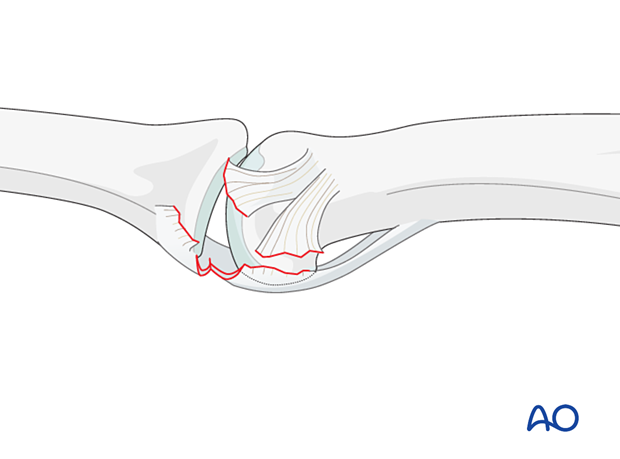
Preparation of the attachment site
Clean the attachment site on the middle phalanx of any remaining soft tissues.
Prepare the reattachment site by exposing the cancellous bone This improves the vascularity of the site and aids later healing.
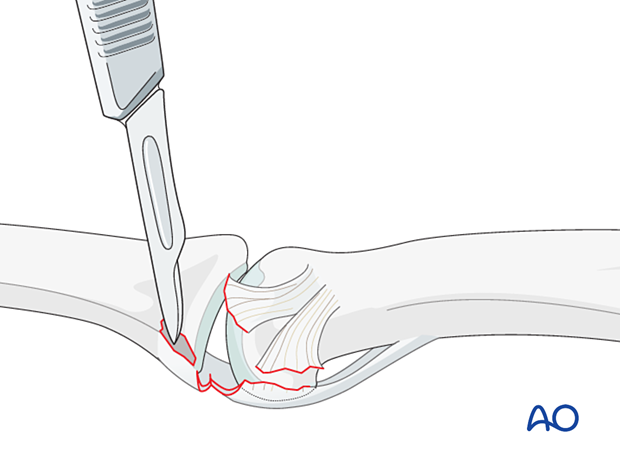
Drilling an anchor hole
Extend the finger for better visualization.
Use the appropriate drill to prepare a pilot hole for the anchor.
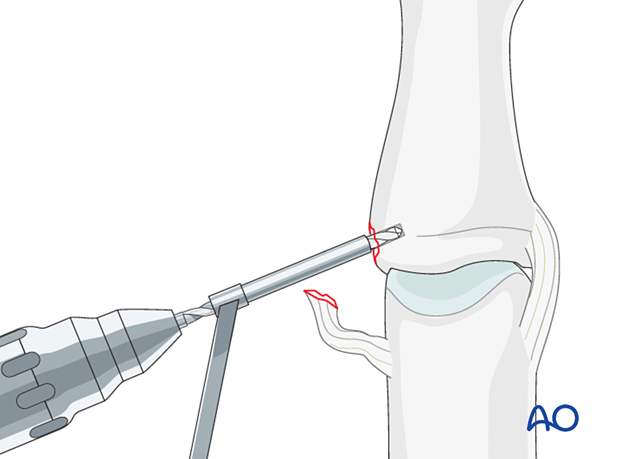
Insertion of the anchor
Insert an anchor with appropriate size according to the manufacturer’s instructions at the isometric point of insertion.
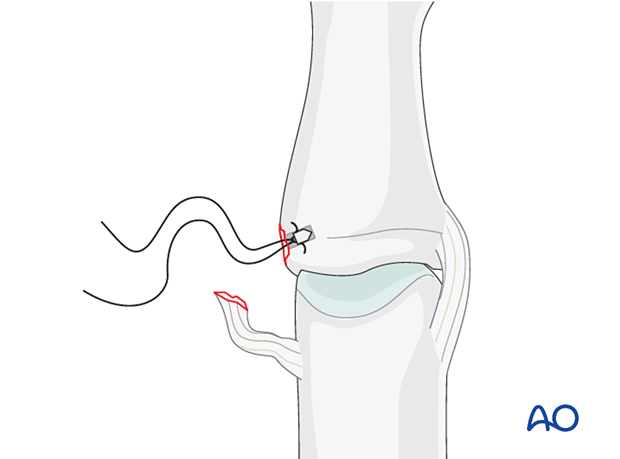
Insertion of sutures
With the joint in slight flexion, approximate the collateral ligament to the reattachment site.
The collateral ligament is repaired as shown.
The volar plate may be repaired with interrupted sutures; however, this is often not necessary.

7. Option 2 – Bone tunneling
Drilling holes
Use a 1.0 mm drill or a K-wire to create two parallel drill holes, angled from proximal to distal and penetrating the opposite cortex. The entry point is close to the articular margin.
A drill sleeve for soft-tissue protection is mandatory.
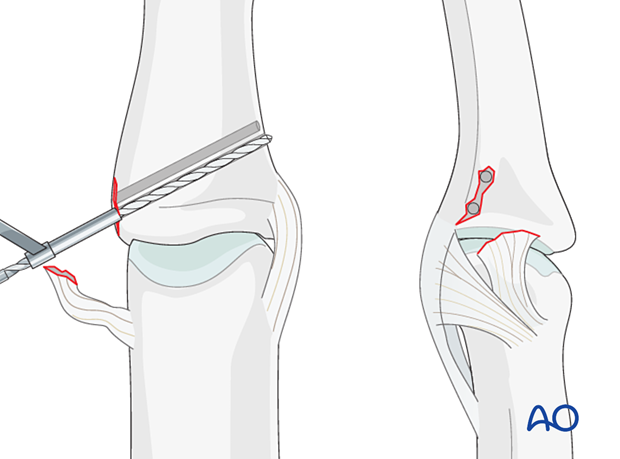
Insertion of sutures
Pass 4.0 nonresorbable, braided sutures with straight needles through the two drill holes.
Alternatively, a suture passer may be used to thread each suture through the two drill holes.
Pass the sutures through the ligament and create a locking loop to anchor the suture in the ligament.
Each needle (or a suture passer) is passed through a drill hole, taking the suture through the opposite cortex.
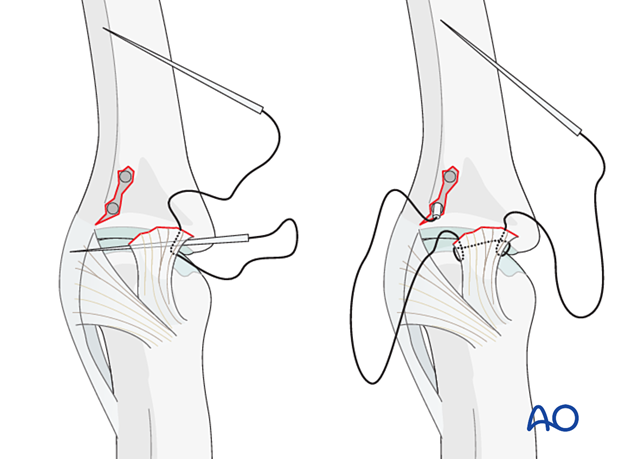
Reapproximating the ligament
Create an incision to retrieve the sutures. Tension the sutures to approximate the ligament to the attachment site and secure them over the cortical bone bridge.

8. Joint transfixation with K-wire
A joint transfixation may help to protect the ligament repair, eg, in a noncompliant patient.
Insert a K-wire across the PIP joint obliquely, with the finger in 20°–30° of flexion to protect the ligament reattachment.
Leave the end of the K-wire outside of the skin for later removal.
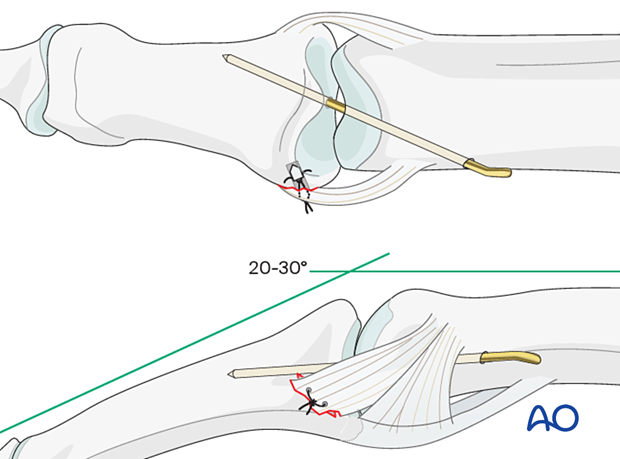
9. Final assessment
Confirm anatomical reduction and fixation with an image intensifier.
10. Aftercare
Postoperative phases
The aftercare can be divided into four phases of healing:
- Inflammatory phase (week 1–3)
- Early repair phase (week 4–6)
- Late repair and early tissue remodeling phase (week 7–12)
- Remodeling and reintegration phase (week 13 onwards)
Full details on each phase can be found here.
Postoperative treatment
If there is swelling, the hand is supported with a dorsal splint for a week. This should allow for movement of the unaffected fingers and help with pain and edema control. The arm should be actively elevated to help reduce the swelling.
The hand should be immobilized in an intrinsic plus (Edinburgh) position:
- Neutral wrist position or up to 15° extension
- MCP joint in 90° flexion
- PIP joint in extension
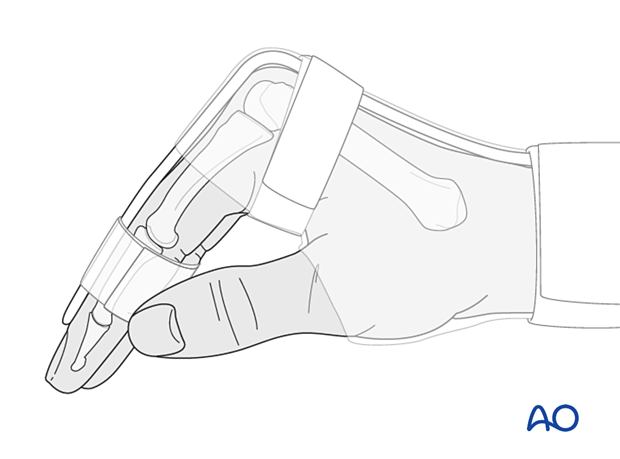
The MCP joint is splinted in flexion to maintain its collateral ligaments at maximal length to avoid contractures.
The PIP joint is splinted in extension to maintain the length of the volar plate.
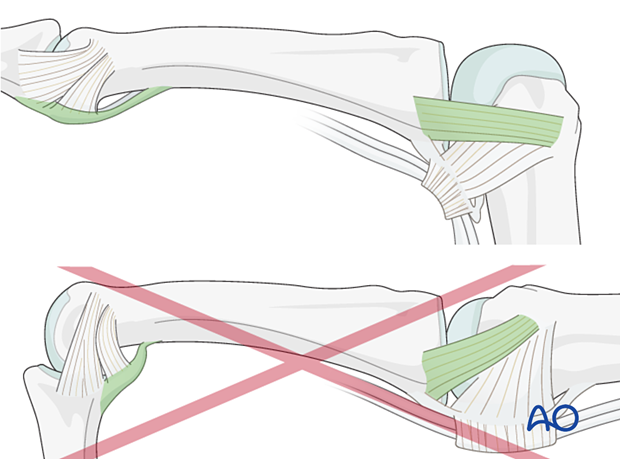
After swelling has subsided, the finger is protected with buddy strapping to neutralize lateral forces on the finger.
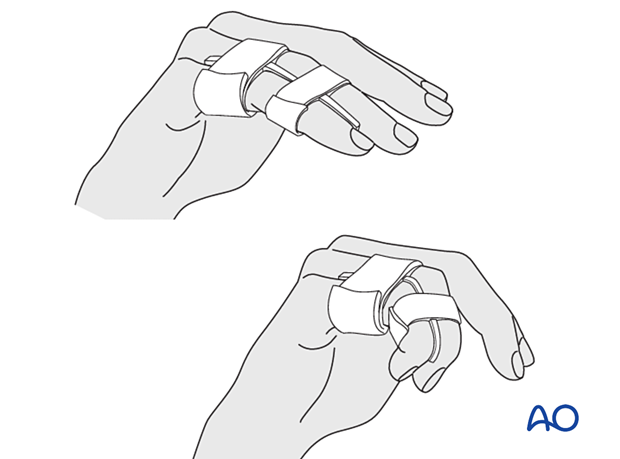
Mobilization
To prevent joint stiffness, the patient should be instructed to begin active motion (flexion and extension) of all nonimmobilized joints immediately after surgery.
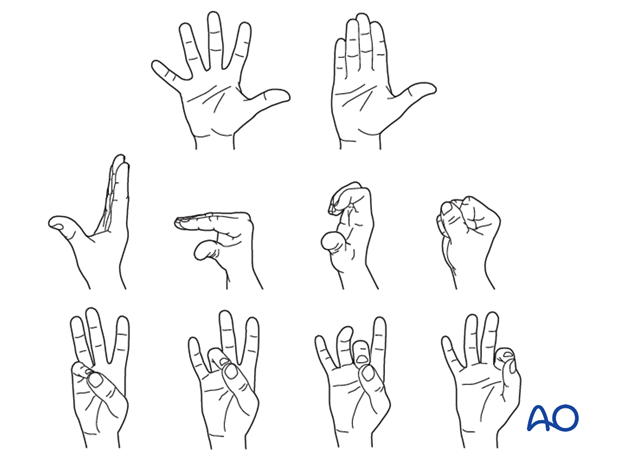
Follow-up
The patient is reviewed frequently to ensure progression of hand mobilization.
In the middle phalanx, the fracture line can be visible in the x-ray for up to 6 months. Clinical evaluation (level of pain) is the most important indicator of fracture healing and consolidation.
K-wire removal
The K-wire is removed after 3 weeks in the outpatient clinic and mobilization is continued under supervision until optimal recovery of motion has been achieved.
